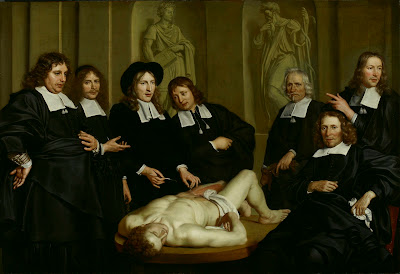12. The Dutch Golden Age (1615-1700)
What was it about? What were the goals?
Although considered part of the Baroque, Dutch painting was a stylistic departure in many ways. Whereas Baroque art was mostly grandiose, idealized, full of splendor, and religious significance, Dutch painting was much more humble. It was intimate, personal, and extremely realistic. Dutch artists loved to specialize in one type of genre: still lifes, portraits, seascapes, cityscapes, etc., in an effort to make a name for themselves. Many of the greatest masterpieces were quite small; usually only group portraits were larger. Dutch artists largely ignored sculpture.
A bit of historical context:
This was a time when the Netherlands, along with Belgium and Luxembourg, successfully fought Spain for independence. Although peace wasn’t settled until the Peace of Münster in 1648, The Netherlands were functionally independent as early as 1581, and became a rich colonial empire. Thus, it grew a large art market, albeit with a dilemma––what to paint? The Dutch had overthrown the monarchy, so no royal portraits were needed, and Calvinism had done away with Christian images in churches. So, art became secular, with scenes of everyday life and people.
And, paint they did – over 1.3 million works from 1640-60. These works were speculative, meaning no one had commissioned them, so the artists chose what they wanted to paint, hoping they’d find a buyer. Many of them sold their works cheap in humongous art markets, and most artists died in poverty––even great ones like Frans Hals, Rembrandt, and Vermeer, who all fell out of fashion in their lifetimes. Still, this new art market created new professions, such as critics and art dealers, who transformed the industry. This new market also disrupted the traditional guild system, as new art academies rose up to teach larger numbers of students.
How was it represented in the other arts – music, architecture, and literature?
It was mostly limited to painting.
What made it great?
In the best works, people seem to come alive. You feel you really know them, that something of their souls were preserved in the paintings.
Some leading figures:
Hals, Frans (Dutch, 1580-1666)
Jan van Goyen (Dutch, 1596-1656)
Jakob van Campen (Dutch, 1596-1657)
Van Dyck, Anthony (Belgian, 1599-1641)
Pieter van Laar (Dutch, 1599-1641)
Simon de Vlieger (Dutch, 1601-1653)
Pieter de Bloot (Dutch, 1601-1658)
van Rijn, Rembrandt (Dutch, 1606-1669)
Willem Kalf (Dutch, 1619-1693)
Jan Steen (Dutch, 1626-1679)
Jacob van Ruisdael (Dutch, 1629-1682)
Vermeer, Johannes (Dutch, 1632-1675)
Some of the most famous artworks of the time:















Comments
Post a Comment